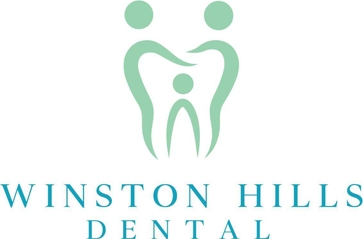Orthodontic treatments enhance dental health and aesthetics, providing solutions for dental alignment and tooth correction. These treatments not only improve the appearance of one’s smile but also contribute significantly to oral health benefits. By addressing issues such as misaligned teeth or improper bites, orthodontic procedures help prevent dental problems like tooth decay, gum disease, and abnormal wear on tooth surfaces.
For individuals seeking aesthetic improvement, orthodontic treatments offer teeth straightening options that enhance the overall look of their smile. In cosmetic dentistry, braces and Invisalign have become popular choices for achieving straighter and more harmonious dental alignment. Braces are a traditional option that involves metal brackets and wires, while Invisalign offers a more discreet alternative using clear aligners.
Braces vs Invisalign
When considering options for improving dental alignment and aesthetics, individuals often weigh the differences between traditional braces and Invisalign clear aligners. Both treatments have unique benefits, and their choice depends on various factors such as lifestyle, oral hygiene practices, and personal preferences.
Here are some key points to consider when deciding between braces and Invisalign:
- Effectiveness: Braces are highly effective for complex cases that require significant teeth movement, while Invisalign is suitable for mild to moderate alignment issues.
- Visibility: Invisalign aligners are virtually invisible, making them popular among adults who prefer a more discreet orthodontic treatment.
- Removability: Unlike braces, Invisalign aligners are removable, allowing for easier oral hygiene maintenance and the ability to enjoy all types of food without restrictions.
- Consultation: It is essential to consult with an orthodontist to determine the most suitable treatment option based on individual needs and desired outcomes.
What are Braces?
Metal braces and ceramic braces are common orthodontic appliances used to correct teeth alignment issues through the application of controlled pressure. Metal braces, also known as traditional braces, are made of high-grade stainless steel and consist of brackets bonded to each tooth. These brackets are connected by an archwire that puts pressure on the teeth, gradually moving them into the desired position. Elastic bands often help apply additional force to specific teeth or jaw areas. Patients with metal braces typically visit their orthodontist for adjustment appointments every 4-6 weeks to tighten or change the archwires.
Ceramic braces work similarly to metal braces but are less noticeable due to their tooth-coloured or clear brackets. While they are more visually appealing, they may be slightly more fragile than metal braces. The treatment duration for both braces varies depending on the severity of the teeth alignment issues but typically ranges from 18 months to 3 years. An orthodontist can provide a personalised treatment plan based on individual needs for effective teeth alignment.
What is Invisalign?
Invisalign, a popular orthodontic treatment option, consists of clear aligner trays designed to correct teeth alignment issues discreetly. Here are some key features of Invisalign:
- Custom Fitting: Invisalign treatment begins with a 3D imaging process that creates custom aligner trays that fit each patient’s mouth perfectly.
- Invisibility: The clear orthodontic aligners are nearly invisible when worn, making them a preferred choice for those seeking a more discreet option for teeth straightening.
- Removability: Unlike traditional braces, Invisalign aligner trays are removable, allowing for easy cleaning of both the trays and the teeth, as well as the freedom to eat without restrictions.
- Treatment Planning: Invisalign treatment involves a detailed plan outlining the gradual shifting of teeth using a series of aligner trays, ensuring a well-structured and effective teeth straightening process.
Invisalign aligners offer a comfortable, convenient, and aesthetically pleasing alternative to traditional braces, making them a popular choice for individuals looking to improve their smiles without the visibility of metal brackets and wires.
Comparing the Effectiveness of Braces and Invisalign
When considering the effectiveness of orthodontic treatments, it becomes imperative to compare the outcomes of braces and Invisalign in addressing various dental conditions such as overbite, underbite, crossbite, and gap teeth.
Braces are highly effective for treating severe misalignments and complex dental issues. They are particularly suitable for correcting significant overbites, underbites, and crossbites. Braces are adept at addressing cases where tooth rotation, vertical movement, and horizontal alignment need significant adjustment.
On the other hand, Invisalign is also effective in treating mild to moderate misalignments, making it a popular choice for individuals with less severe dental issues like minor overbites, mild underbites, or small gaps between teeth. Invisalign aligners are custom-made to gradually shift teeth into their proper position, offering a more discreet and convenient alternative to traditional braces.
Understanding the severity and type of dental problem is crucial in determining the most effective treatment between braces and Invisalign for achieving a straighter smile.
Pros and Cons of Each Treatment
When considering orthodontic treatments, it is essential to weigh the advantages and disadvantages of traditional braces and clear aligners like Invisalign.
- Braces:
- Advantages:
- Effective for complex cases.
- No risk of misplacement or loss.
- Disadvantages:
- Less aesthetically pleasing.
- Potential discomfort due to wires and brackets.
- Advantages:
- Invisalign:
- Advantages:
- Nearly invisible, enhancing visual aesthetics.
- Removable for easy maintenance and oral hygiene.
- Disadvantages:
- Requires strict adherence to wear schedule for effectiveness.
- Food restrictions to prevent damage or staining.
- Advantages:
When deciding between braces and Invisalign, it is crucial to consider factors such as comfort, maintenance, aesthetic preferences, and daily impact. Braces offer stability and effectiveness for complex cases but may be less visually appealing and cause discomfort.
In contrast, Invisalign provides a more aesthetic solution with easier maintenance and oral hygiene practices, but strict adherence to wear schedules and food restrictions are essential for optimal results. Choose the treatment that aligns best with your lifestyle and preferences to achieve a beautiful, healthy smile.
Key Takeaways
For personalised guidance on choosing braces and Invisalign that align with your specific dental needs and lifestyle preferences, schedule a consultation with the experienced team at Winston Hills Dental located in Winston Hills, NSW, 2153.
By seeking professional advice from Winston Hills Dental, you can make an informed decision that sets you on the path towards achieving your oral health goals. Contact Winston Hills Dental today to take the first step towards a confident smile.

